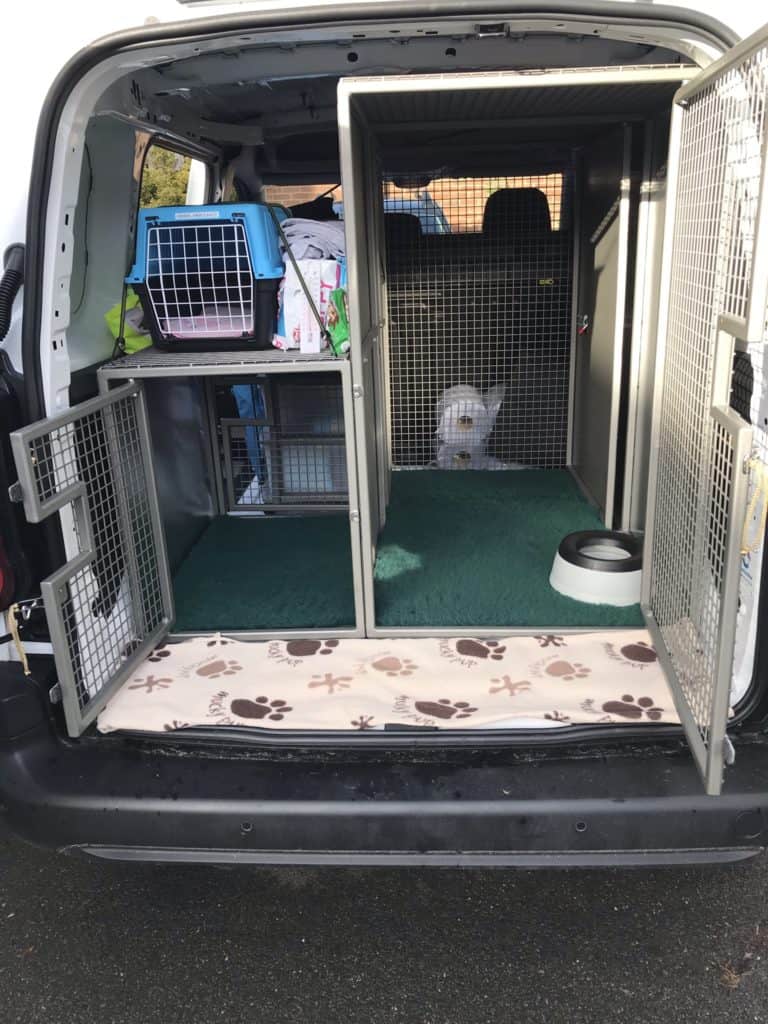Driving long journeys with a dog can be a fun and exciting adventure, but it also requires some preparation and patience. Here are some tips to make the journey more enjoyable for both you and your furry friend.
Firstly, make sure your dog is comfortable and secure during the journey. Use a pet seat belt, harness or a crate to keep them safe and prevent them from being a distraction to the driver. Also, consider bringing along your dog’s favourite toys, bedding, and food to keep them relaxed and happy.
Secondly, plan for regular breaks to allow your dog to stretch their legs and relieve themselves. This is also a good opportunity to give them some water and food. Keep in mind that some dogs may get motion sickness, so be prepared for this possibility by bringing medication or consulting with your vet beforehand.
Thirdly, bear in mind where in your car your dog is. We can shade ourselves from direct sunlight quite easily, but often dogs are in the boot or hatchback where they are in constant sunlight; this can be debilitating and harmful for your prize pooch.
Lastly, make sure to follow all the rules and regulations regarding traveling with pets in different countries. This will include having updated vaccinations, a microchip, a pet health certificate, and a valid documentation.
With these tips in mind, you and your furry companion can have a safe and enjoyable journey together. There are of course alternatives if you don’t have a car, have a small car, or just can’t fit your dog in the car with the kids and their kites, or your last-minute packed boxes for your house move! You can find more dog travel tips from the AA.
Why Use a Pet Taxi/Animal Ambulance

Using a pet taxi can be a great option for pet owners who need to transport their furry friends to vet or grooming appointments, events, house moves, holidays etc. Pet taxis are essentially pet-friendly vehicles that are equipped with special animal accommodation to ensure your pet’s safety during transport.
One of the biggest advantages of using a pet taxi is convenience. It can be challenging to transport your pet, especially if you don’t have a car or if your pet is too large to fit in a carrier or on public transport.
With a pet taxi, you can easily schedule a pick-up and drop-off time that works for you, and your pet can travel in comfort without the stress of being in an unfamiliar environment.
Another benefit of using a pet taxi is safety. Professional pet taxi services are staffed by experienced drivers who are trained to handle pets safely and securely. They also have the proper equipment to ensure that your pet is comfortable and secure during the ride.
Additionally, using a pet taxi can be a great way to reduce stress for both you and your pet. If you’re traveling with your pet, you won’t have to worry about navigating unfamiliar roads or dealing with the stress of driving in traffic. Your pet will also be able to relax and enjoy the ride without the added stress of being close to and feeding off their human companions, or in a new environment. UK Pet Taxis should be approved by and hold valid DEFRA welfare in transport licenses, should be insured and the driver will be trained in pet transportation.
Overall, using a pet taxi can be a great option for pet owners who need to transport their pets safely and conveniently. Whether you’re going to the vet, the groomer, or on a vacation, a pet taxi can help make the experience less stressful for both you and your furry friend.
Emergency Pet Taxi/Animal Ambulance
An Animal Ambulance is a specialised vehicle that is designed to transport injured or sick animals to a vet hospital for treatment. It is equipped with all the necessary tools and equipment that are required to provide first aid and assistance to animals injured or in distress. Animal ambulances are typically operated by animal welfare organisations, animal rescue groups, or veterinary hospitals, but some are operated by companies specialising in Pet Transport and Animal Ambulance services, often working on behalf of local vets.
These vehicles are often equipped with cages, stretchers, first-aid kits, and other equipment that are essential for providing immediate care to animals in need. The staff of animal ambulances are trained to handle animals with care and compassion, and to provide them with the necessary first aid attention until they reach the veterinary hospital. If you’d like to work with a pet taxi or animal ambulance company provider, then Animals at Home has the UK’s largest fleet of Welfare in Transport licensed vehicles.
